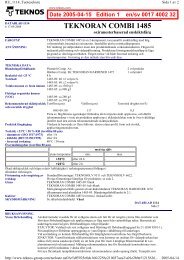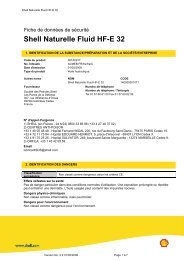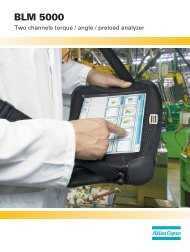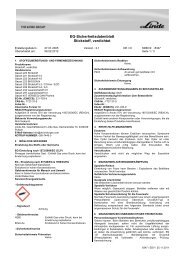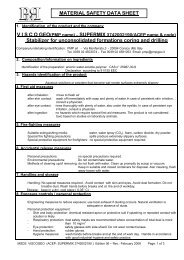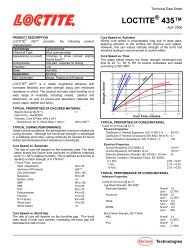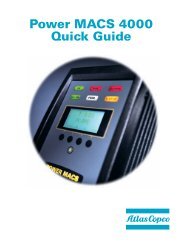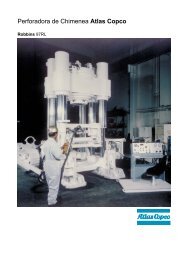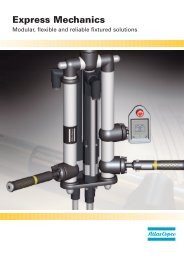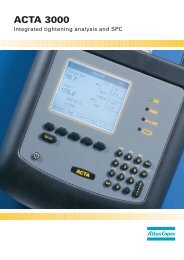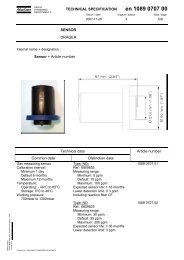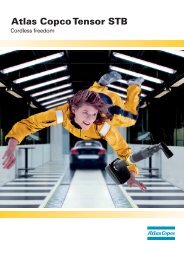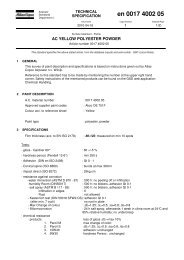Ergonomics - Atlas Copco
Ergonomics - Atlas Copco
Ergonomics - Atlas Copco
You also want an ePaper? Increase the reach of your titles
YUMPU automatically turns print PDFs into web optimized ePapers that Google loves.
74<br />
Fig. 3.3 The same feed force applied by the operator causes a different load on the wrist depending on posture.<br />
elbow level (Fig. 3.3). The same feed force in<br />
a tool with a straight handle used on a hori-<br />
zontal workpiece is limited by the operator’s<br />
muscular capacity to push the tool down (ul-<br />
nar push force). The strength of the person’s<br />
grip can also be a limiting factor, as there is a<br />
tendency for the hand to slip on the handle.<br />
Similarly, the reaction torque in a pistol<br />
handle tool used on a vertical workpiece<br />
applies an axial rotation torque to the<br />
operator’s forearm. Therefore the forearm’s<br />
muscular capacity to rotate, supination or<br />
pronation, will determine the maximal allow-<br />
able installed torque of a pistol-type tool. An<br />
intolerable torque in a pistol handle tool may<br />
well be tolerable in an angular-type tool, due<br />
to the advantage of pulling muscle strength<br />
as well as the extra leverage provided by the<br />
angular tool (Fig. 3.4 ).<br />
In summary, feed force and reaction<br />
torque during hand tool operations demand<br />
different actions from the hand-arm system,<br />
depending on the tool design and the tasks<br />
being performed.<br />
Fig. 3.4 When using pistol grip tools, torque applied by the operator is limited by the operator’s<br />
supination torque capacity. For higher torque an angle nutrunner is a better alternative utilizing<br />
the pulling back force to balance the installed torque.



